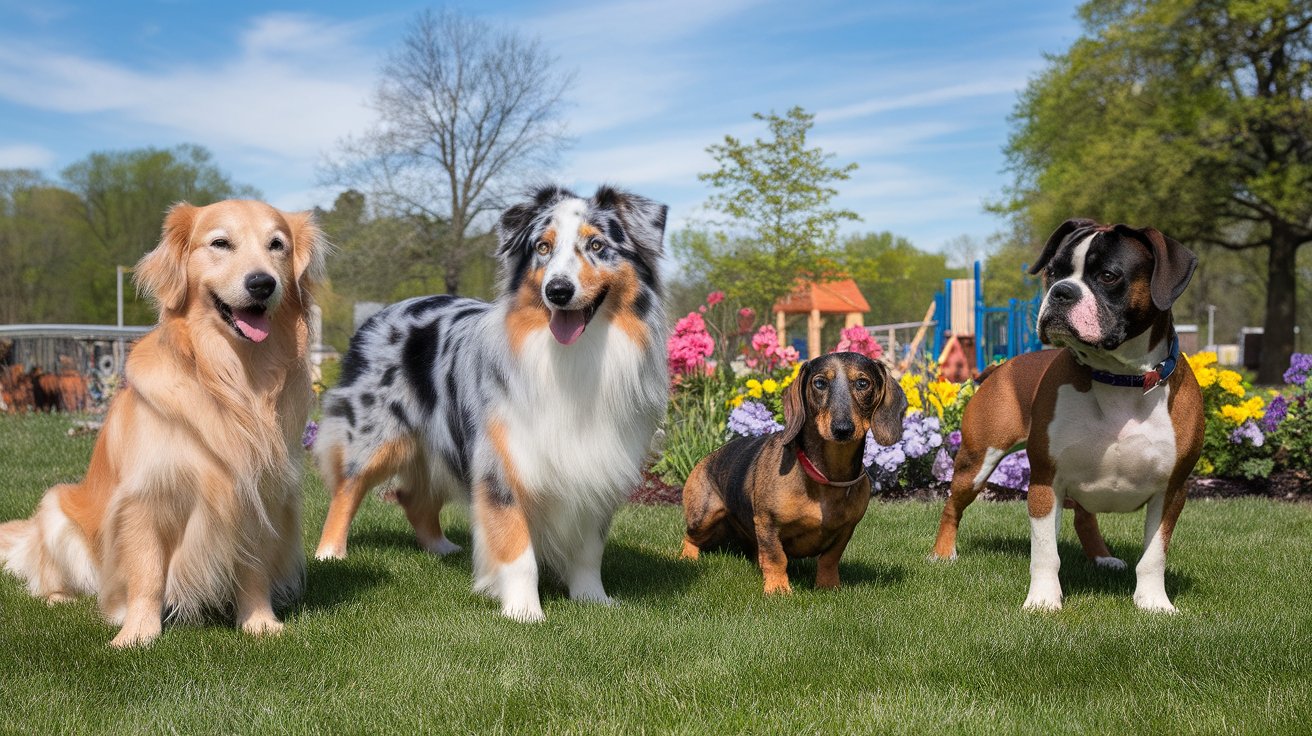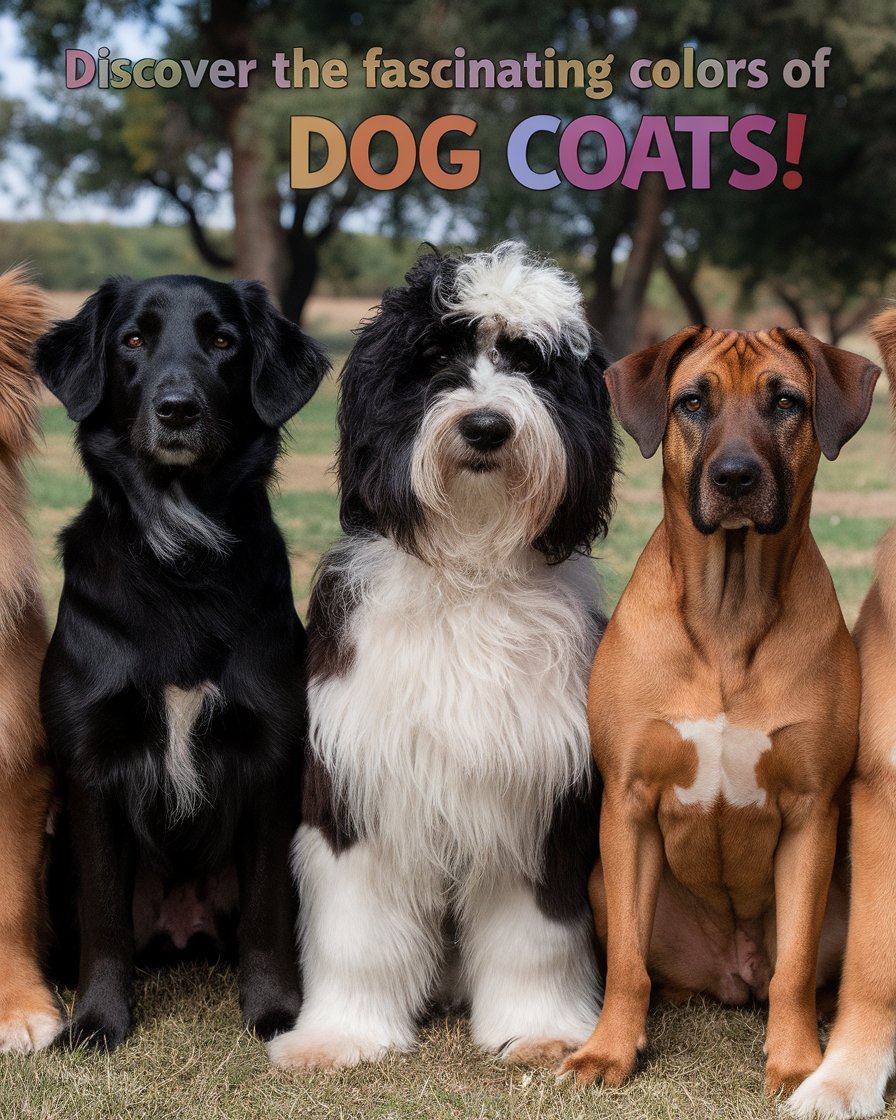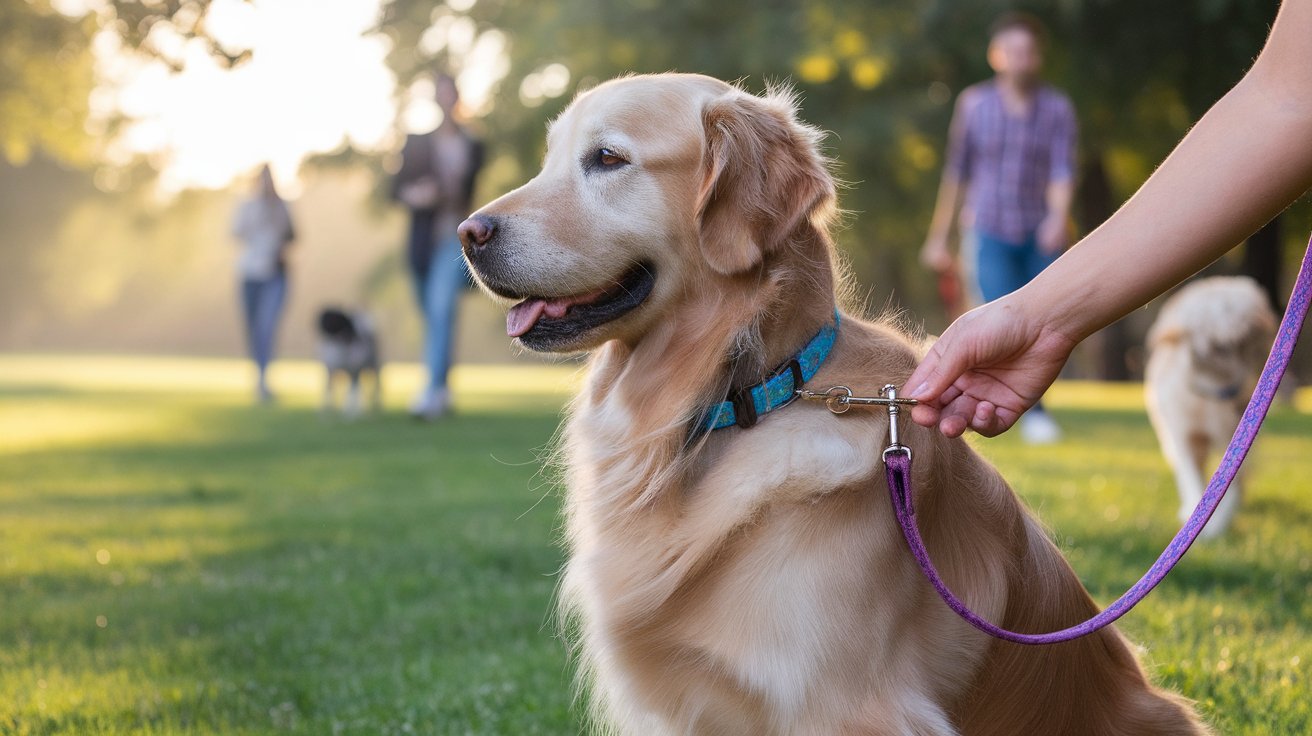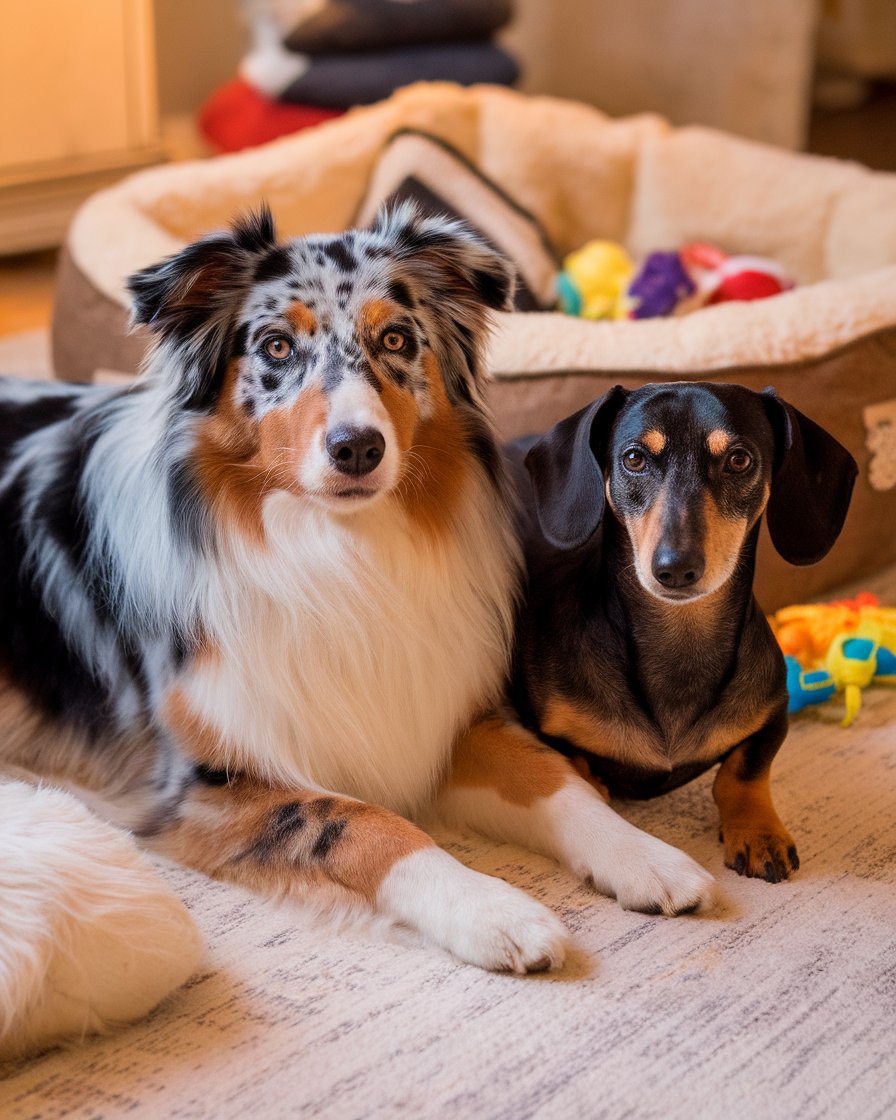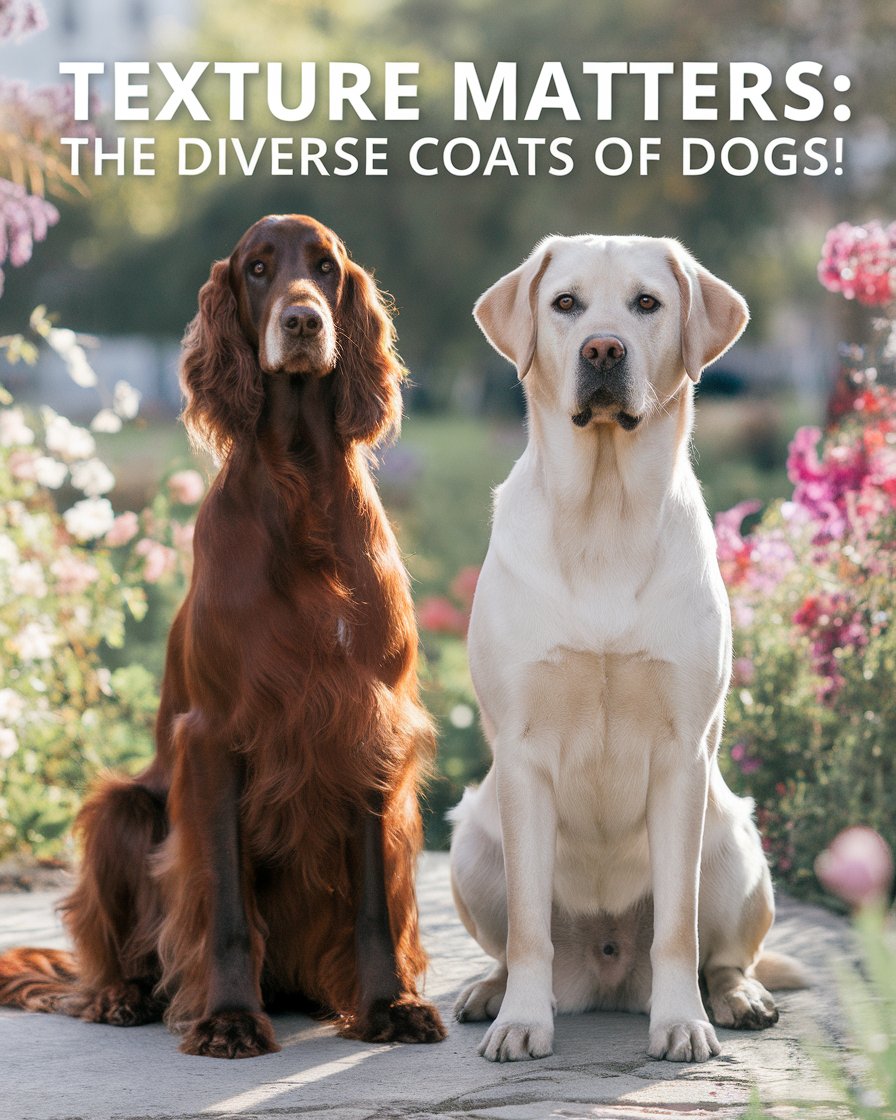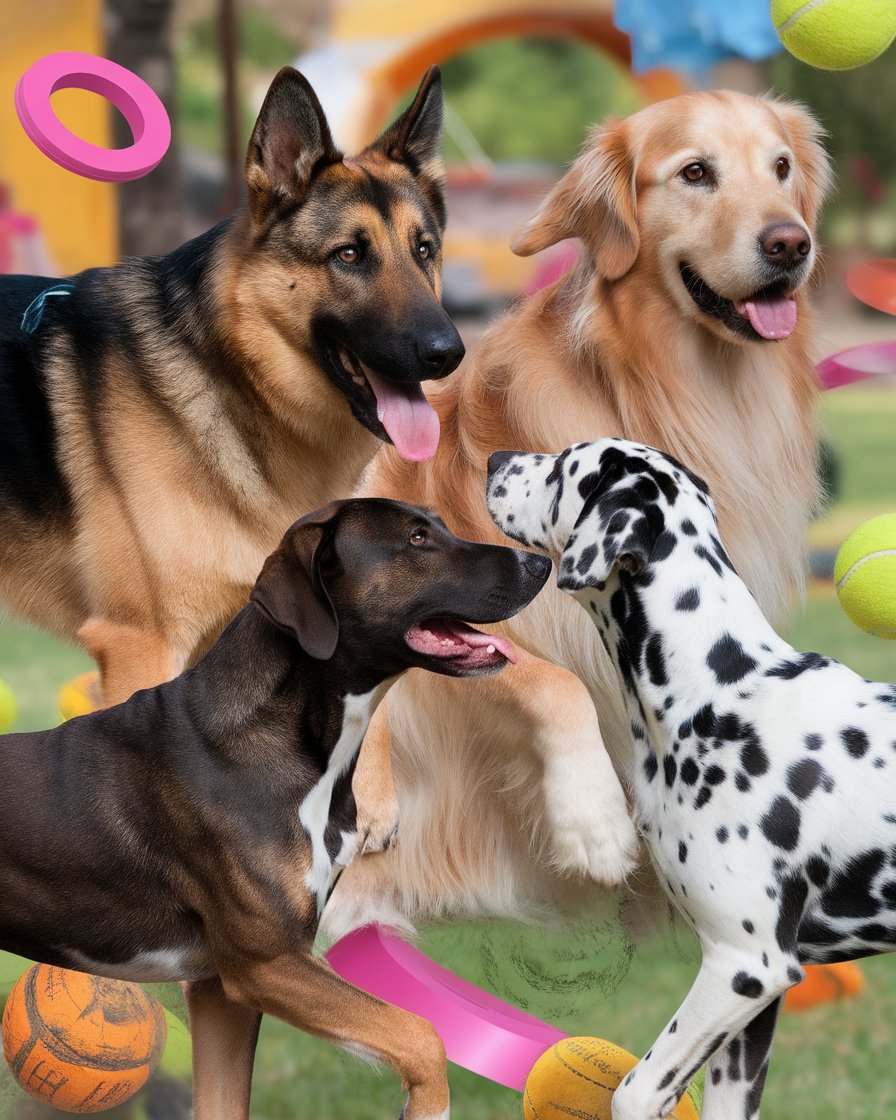Introduction
When it comes to dogs, coat color and patterns play a crucial role in defining their appearance and personality. With a vast array of dog coat colors and patterns, each breed showcases unique characteristics. For instance, a black dog may have a sleek coat that highlights its athletic build, while a white-coated dog often stands out in a crowd. Additionally, breeds like the Golden Retriever display golden hues, contrasting beautifully with the gray coat of the Weimaraner. These color variations can also include lighter shades and the occasional albino dogs that are mistaken for white-coated dogs, making each dog visually distinct.
Understanding dog coat colors goes beyond aesthetics; it can also provide insights into the breed’s history and traits. For example, dogs with merle patterns often possess three clearly defined colors, while those with short and smooth coats are typically easier to groom. Recognizing these colors and patterns not only enhances our appreciation of dog breeds but also aids in making informed decisions when choosing a furry companion.
Key Takeaways
-
Dogs exhibit a diverse range of coat colors and patterns that define their appearance and breed characteristics.
-
Understanding coat colors can provide insights into a dog’s breed lineage and influence visibility in various environments.
-
Seasonal changes can affect a dog’s coat color, highlighting the importance of regular grooming and maintenance.
-
Unique coat patterns, such as merle and brindle, enhance the aesthetic appeal of dogs and signify specific breed standards.
-
The texture of a dog’s coat plays a crucial role in how its color is perceived and affects grooming needs.
-
Mixed breed dogs showcase a remarkable variety of coat color combinations, reflecting the genetic diversity of their parent breeds.
Exploring Dog Coat Colors: A Guide to Common Breeds
Dogs come in an impressive array of coat colors, making each breed distinct. For instance, the Australian Cattle Dog is often recognized for its striking blue coat color, while the Golden Retriever typically boasts a golden hue. Common dog coat colors include black, white, and brown, but many breeds also exhibit unique variations. For example, some dogs may have patches of different colors, such as the black and tan markings seen in certain terrier breeds. Additionally, the presence of white spots or a mix of colors enhances the visual appeal of a dog’s coat. Understanding these colors is essential for appreciating the beauty and diversity of dog breeds and their coat colors.
Insights into Dog Coat Colors and Patterns
1. Genetic Influence on Coat Color
The colors and patterns seen in dog breeds often stem from genetic variations. These traits can dictate not only the appearance but also the dog’s ability to adapt to different environments, impacting their visibility and functionality.
2. Cultural Preferences in Dog Breeds
Different cultures may have varying preferences for specific coat colors and patterns, which can affect the popularity of certain breeds. For instance, some regions may favor lighter colors due to aesthetic or climatic reasons.
3. Practical Grooming Considerations
The color and pattern of a dog’s coat can influence grooming routines. For example, lighter colors may show dirt more easily, necessitating more frequent baths, while certain patterns might require specific brushing techniques to avoid matting.
4. Health Implications Related to Coat Color
Certain coat colors may be associated with health issues. For instance, breeds with predominantly white coats can be more prone to skin problems, highlighting the need for vigilant care and protection from the sun.
5. Perception of Temperament and Behavior
Research indicates that people may perceive dogs with specific coat colors as having distinct temperaments. For example, a black dog might be seen as more intimidating, whereas a golden or light-colored dog might be perceived as friendlier.
6. Unique Breed Standards and Characteristics
Each breed is subject to established standards regarding coat colors and patterns. These specifications contribute to the breed’s identity and help in maintaining its unique traits, making it essential for breeders and owners to be aware of these standards.
The Significance of Coat Color in Dog Breeds
Coat color can reveal a lot about a dog’s breed and lineage. For instance, many purebred dogs have specific coat colors that adhere to breed standards. The presence of a blue coat in breeds like the Australian Cattle Dog is often linked to their heritage. Understanding these color distinctions helps potential owners appreciate the breed’s characteristics and make informed decisions. Additionally, certain coat colors can influence a dog’s visibility in different environments, which can be crucial for outdoor activities and safety.
Seasonal Changes in Dog Coat Color
Many dogs exhibit changes in their coat color with the seasons. For example, a dog’s coat may appear darker in winter and lighten during summer due to sunlight exposure and environmental factors. These seasonal changes can affect the perception of a dog’s coat color and pattern. Owners should be aware of these changes, as they might indicate health issues or the need for adjusted grooming routines. Regular brushing and exposure to sunlight can help maintain a healthy coat throughout the year.
Understanding Coat Patterns and Markings in Dogs
Coat patterns and markings add another layer of uniqueness to a dog’s appearance. Common coat patterns include merle, brindle, and piebald, which can vary widely across different breeds. For instance, the Dachshund is known for its unique markings that often combine several colors. A dog’s coat may also display stripes or spots, creating a distinctive look that can capture the attention of any dog lover. These patterns not only serve aesthetic purposes but can also indicate specific breed standards, helping to differentiate between similar breeds. Recognizing these patterns enhances our understanding of how diversity manifests in canine coats.
Case Study: The Genetics of Coat Color in Dogs
A comprehensive study by the University of California, Davis, highlights how genetics play a crucial role in determining the coat color and patterns seen in various dog breeds. This research identifies key genes responsible for popular patterns like merle, brindle, and piebald. For example, the Australian Shepherd is known for its striking merle coat, which results from specific genetic combinations. Additionally, the study notes that the brindle pattern, often found in breeds like Boxers, consists of darker streaks on a lighter base. Understanding these genetic factors is essential for breeders and dog owners alike, as it not only informs breeding practices but also enhances the appreciation of breed standards. Recognizing and valuing the diversity in coat patterns allows potential dog owners to make informed decisions when selecting their canine companions.
Common Patterns Found in Different Dog Breeds
Several breeds exhibit specific coat patterns that define their appearance. For instance, the merle pattern is prevalent in breeds like the Australian Shepherd, characterized by its marbled coat and unique markings. Additionally, the brindle pattern, seen in breeds such as Boxers, consists of streaks of darker color on a lighter base. Recognizing these patterns is essential for dog owners, as it enhances their appreciation of breed standards and the genetic diversity within dog breeds.
How to Identify Markings in Various Breeds
Identifying coat markings is crucial for breed identification and understanding a dog’s lineage. Markings like spots, stripes, or patches can vary significantly between individual dogs, even within the same breed. For example, spotted dogs like the Dalmatian have a distinctive appearance due to their unique color distribution. Understanding these markings helps potential dog owners recognize and appreciate the individuality of each dog, regardless of breed.
The Variety of Dog Coat Textures and Their Colors
Dog coats are not just defined by color; the texture of the fur also plays a significant role in breed identification. Breeds like the Irish Setter feature a long, silky coat, while others, such as the Australian Cattle Dog, have a short, rough coat. These variations affect how dogs manage temperature and their overall grooming needs. Moreover, coat texture can influence the dog’s appearance, making certain colors appear more vibrant. Understanding these textures, alongside their colors, helps potential dog owners make informed choices about the breeds that best suit their lifestyle and grooming preferences.
Grooming Needs for Different Coat Types
Grooming requirements can vary widely depending on a dog’s coat texture. Breeds with long, flowing coats, such as the Golden Retriever, require regular brushing to prevent mats and tangles. Conversely, short-coated dogs like the Labrador Retriever may require less maintenance but still benefit from occasional brushing to remove loose fur. Understanding these grooming needs is essential for dog owners to maintain their pet’s health and appearance effectively.
The Impact of Coat Texture on Color Appearance
The texture of a dog’s coat can significantly influence how its color is perceived. A shiny, smooth coat can make colors appear more vibrant, while a rough, curly coat may diffuse the color, giving it a softer look. For instance, dogs with double coats often display a rich variety of colors and patterns. Being aware of these effects helps owners appreciate the aesthetics of their dog’s coat and make informed grooming choices.
“Such is the power of the dog, that a man’s best friend can teach you about love, loyalty, and the importance of understanding their unique traits.” – John Grogan
Dog Breeds and Their Unique Coat Color Combinations
Many dog breeds showcase a remarkable array of coat color combinations. Some breeds, like the German Shepherd, may display a mix of black and tan, while others, such as the golden retriever, are predominantly a single color. The presence of lighter or darker colors on different parts of the body can create visually striking contrasts. For instance, a dog may have a red coat with darker shades on its ears or back. Recognizing these combinations allows dog enthusiasts to appreciate the genetic diversity within breeds and helps identify potential health issues related to specific coat colors.
The Genetics Behind Coat Color Combinations
Understanding the genetics behind a dog’s coat color can shed light on why certain breeds exhibit specific color combinations. Breeding two dogs with distinct colors can produce a variety of outcomes, leading to unique coat patterns and combinations. Genetic variation plays a crucial role in the diversity of colors and markings seen in many breeds. Aspiring dog breeders should consider these genetic factors when selecting parent dogs to achieve desired coat colors.
Identifying Unique Coat Color Combinations in Mixed Breeds
Mixed breed dogs often display a fascinating array of coat colors and patterns, resulting from the combination of different breeds. These dogs may have unique color combinations that showcase traits from both parent breeds. For example, a mixed breed dog might inherit the black and tan color pattern from one parent and a lighter coat from the other. Recognizing and celebrating these combinations is important for appreciating the individuality of mixed breed dogs.
Conclusion
In wrapping up our exploration of dog coat colors and patterns, it’s clear that these features are much more than just pretty sights. They play a vital role in showing off each dog’s uniqueness and personality. Just think about it: a black dog can stand out with its sleek fur, while a white-coated dog catches your eye with its bright and shiny coat. Some breeds, like the Australian Cattle Dog, may flaunt a blue coat, adding to their distinct appeal. Then you have the striking look of merle dogs, known for their colorful patterns that can really turn heads!
But it’s not just about looks. The dog’s coat color can tell a story about its breed and lineage. Understanding these colors, like red or sable coat, helps potential dog owners make smart choices. Plus, being aware of how coats change with the seasons can keep your furry friend healthy and happy. So, whether it’s about spotting a popular dog or celebrating the array of colors, recognizing these aspects of a dog’s coat makes the bond with our pets even richer.

